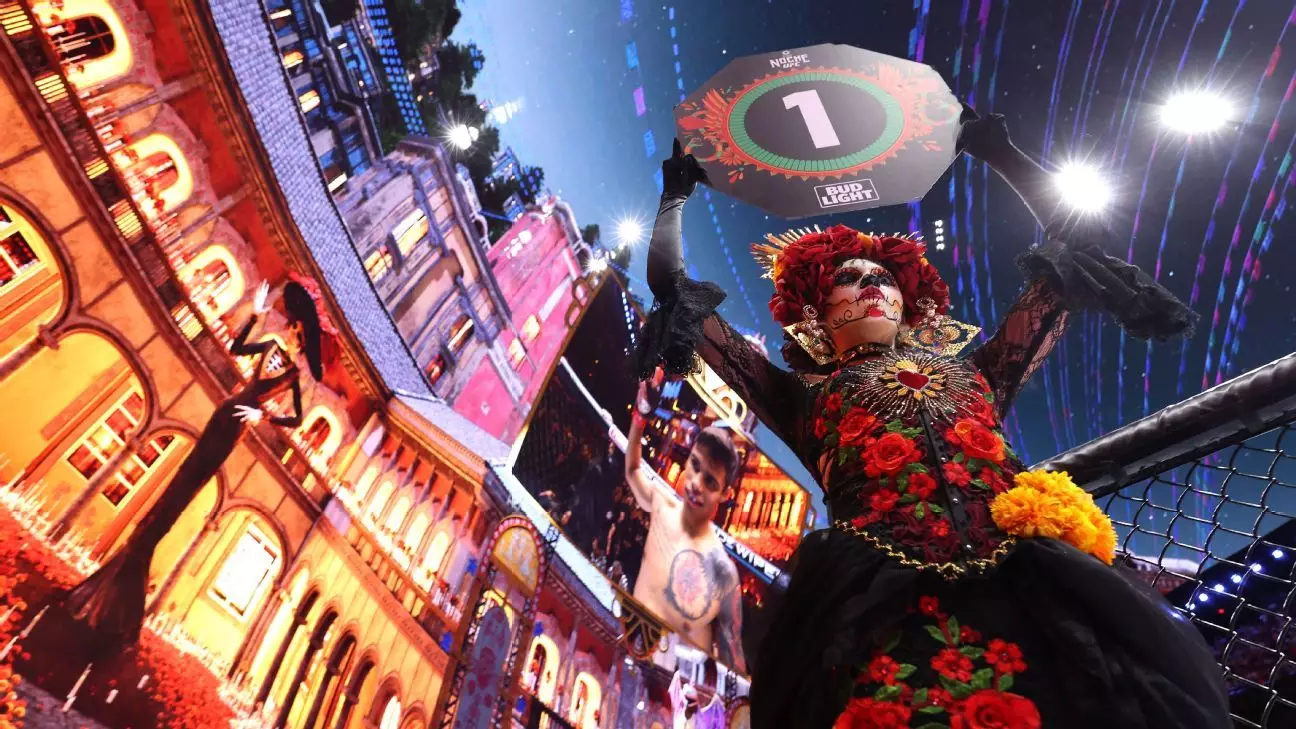As Mexican Independence Day approached, UFC president Dana White seized the opportunity to craft a transformative experience for fans around the world, intertwining combat sports with Mexican culture. Hosting the event at the Sphere in Las Vegas—a remarkable venue known for its unparalleled design and cutting-edge technology—provided the perfect backdrop for such an ambitious storytelling endeavor. The Sphere, with its impressive dimensions of over 360 feet tall and exterior made of 580,000 square feet of fully programmable LED, was a fitting choice for White’s vision of blending tradition with modernity.
White characterized this production as a “love letter to Mexico,” aiming to highlight the nation’s rich history and passionate fighting spirit, a theme that resonates within and beyond the world of combat sports. His intention was not merely to present a series of fights, but rather to celebrate the culture and traditions of Mexico through a compelling narrative—what he dubbed a movie that would unfold concurrently with the live fights. In his words, the spectacle would comprise chapters, transitioning between cinematic storytelling and live athleticism, creating a dynamic experience that spanned from the pre-Hispanic era to the contemporary landscape.
A Cultural Cinematic Journey
The event, aptly named UFC 306, captured the attention of an audience of over 16,000 attendees. Throughout its main card, snippets of the film titled “For Mexico, For All Time” were showcased, with each chapter designed to reflect different epochs of Mexican history. Alongside these cinematic interludes, fans were treated to the visual splendor of UFC’s well-known “Octagon Girls,” who donned attire symbolic of various regional themes and cultural motifs pertinent to Mexico’s diverse heritage.
The creative team behind this ambitious project included industry professionals such as Joe Sill, a director affiliated with Impossible Objects, who noted the rare opportunity to merge Mexican culture with the historical narrative of the UFC. The exhibition of these chapters inside the Sphere not only provided a visual feast but also hinted at what the future of interactive storytelling might encompass. Each segment was crafted with meticulous attention to detail, ultimately culminating in a multifaceted representation of Mexico’s enduring combat sports legacy.
Rich Tapestry of Visuals and Themes
The artistic direction of the chapters sought to transport viewers through the annals of history. Saad Moosajee’s contribution aimed to capture the essence of early Mexican civilization, while Paul Nicholls from Factory Fifteen endeavored to blend traditional Mexican rituals with a contemporary narrative. This eclectic mesh of research and fantasy was intended to present a vivid portrayal of Mexico’s past, complete with visual aesthetics that resonated with national pride.
Aspect of visual storytelling was also heavily influenced by the legacy of prominent Mexican muralists such as Diego Rivera, whose style informed chapter 4’s dedication to the independence movement. As per Diego Huacuja, the director producing this particular chapter, the project was both a personal and professional challenge that pushed creative boundaries, aiming to honor the struggles and triumphs of a nation.
Hailing from Nexus Studios, directors Shynola and Chris O’Reilly echoed this sentiment, emphasizing that the grandeur of the Sphere required a unique cinematic language—one that capitalized on the specificity of the venue and transformed how stories could be told. They described the experience not only as innovative but also exhilarating. The collaborative nature of the project brought together artists, designers, and technical experts, striving for a cohesive auditory and visual experience that immersed the audience in a storyline unlike any other.
With its intricate combination of culture, history, and live athletic competition, UFC 306 at the Sphere marked a significant leap forward in the field of sports entertainment. Dana White’s vision of an event that honors Mexican heritage while celebrating the art of fighting successfully breathed new life into how events can be structured and experienced. Engaging both heart and mind, the night stood as a testament to the power of storytelling in sports—a celebration of resilience, pride, and an unyielding spirit. As the Sphere showcased its dazzling capabilities, it also opened a myriad of possibilities for similar future endeavors, encouraging a holistic approach to cultural representation in the dynamic world of combat sports.


Leave a Reply